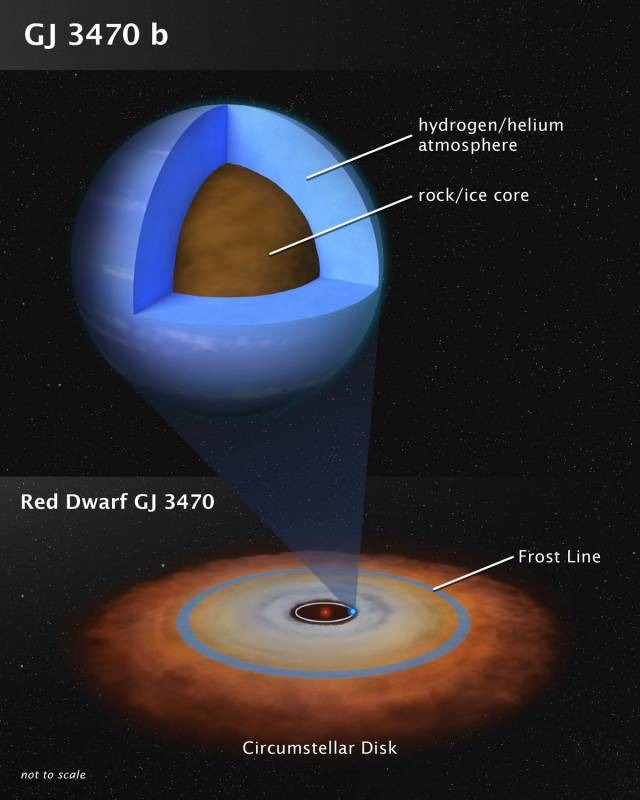Hubble And Spitzer Team To Identify Exoplanet Atmosphere
Two of NASA's space telescopes have teamed up to identify, for the first time, the chemical fingerprint of a planet between the sizes of Earth and Neptune. The planet the two teamed up to analyze is Gliese 3470 b known as GJ 3470 b, and the planet is thought to be a cross between Neptune and Earth.The planet is believed to have a large, rocky core buried under a hydrogen-and-helium atmosphere. The planet weighs in at 12.6 Earth masses and it less massive than Neptune. Scientists have inventoried the content of GJ 3470 b's atmosphere to uncover clues about its nature and origin.
The planet orbits close to the star and has primordial hydrogen and helium atmosphere that is largely unpolluted by heavier elements. Scientists say there is nothing like this planet in our solar system. The measurements were made by measuring the absorption of starlight as the planet passed in front of its star and the loss of reflected light as it passed behind the star.

Spitzer and Hubble observed 12 transits and 20 eclipses to analyze chemical fingerprints using "spectroscopy." The atmosphere is mostly clear with only thin hazes allowing scientists to look deeper into it. The team says that it expected heavier elements like oxygen and carbon similar to Neptune.
Instead, the planet has an atmosphere deficient in heavy elements, and its composition resembles the hydrogen/helium-rich composition of the sun. The planet is thought to have formed where it is today and to have gained its atmosphere from orbiting close to its red dwarf host star. Scientists are looking forward to the James Webb Space telescope launching as it will allow them to peer further into the planet's atmosphere.
